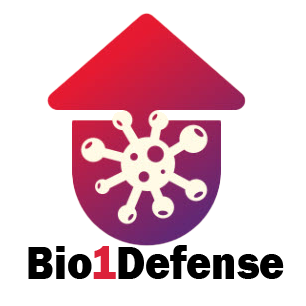- Thermostat Regulation
- Even hear the “click” on a thermostat? That click is a trigger that, when activated, kicks your AC or heating system into operation. It runs for a short period of time, satisfies the temperature you have set, then clicks off. Take notice of the duration. You’d be surprised how intermittent it can be depending on your business/home construction, insulation and certainly the time of year. In-Duct UV products rely on your HVAC system to cycle “on” to provide disinfected air to you space
- Seasons:
- During milder temperatures it is common for HVAC system to run 2-3 times per hour for 10-15 minutes. The intermittency of operation can result in up to 960 minutes per day or 16 hours per day during which you have no active disinfection occurring in your business or home.
- In the spring and fall you may have relatively mild temperatures during which the thermostat never switches on. During these times, your AC or heating system is not operating and thus you receive zero benefit from the UV disinfection system operating in system operating in your ducts
- Is the UVC lamp in my main duct branch effective at killing (deactivating) viruses, bacteria and fungi?
- Before we answer the question, we’ll dive into some light math:
- Whether or not a Pathogen (Virus, bacteria, or fungi) gets deactivated by UVC light is a function of Exposure Time and Light Intensity (Irradiance). As cited in our UVGI blog post, the equation is as follows:
- D = Et x IR
- Dosage (D) = UV Exposure dose (measures in Joules per meter squared {J/m2})
- Et = Exposure time (seconds)
- IR = Irradiance (W/m2)
- D = Et x IR
- Factors that influence the Dosage equation:
- Fan speed:
- Question: when you bought your HVAC system were you thinking about using UVC lamps in them for disinfection purposes?……we didn’t think so. In-duct UV products are most often retro-fits for existing HVAC system.
- Would it be safe to say then that your Exposure Time to the UVGI lamps may not be sufficient? Think about our sunburn analogy is the UVGI blog Post. It is likely that your fan speed blows pathogens past the UVC lamps at too great of a speed to be considered optimal. Yes, the lamps will be effective to some degree, but that also increases the chances of infection occurring in your business or home.
- Reflectivity
- Question: Are your ducts clean? How much do they reflect the UVC lamps to increase their effectiveness?
- You probably do not know the answer to these question, but it’s likely to conclude that you may receive little to no benefit from the reflection off the ductwork.
- Little to no reflection means that you are limited to the immediate area surrounding the UVC lamps. You would not be receiving the compounding effects of reflection and subsequent increase in Irradiance levels and deactivation rates.
- Question: Are your ducts clean? How much do they reflect the UVC lamps to increase their effectiveness?
- Fan speed:
- Air Distribution – Supply and Returns
- Question: Where do viruses originate?
- Answer: from humans or other animals (Kowalski, 2016)
- Supplying disinfected air to an indoor space/room is equally as important drawing contaminated air away from the room:
- HVAC systems often haves return air registers (sucking air from the building) that are centralized. Look in your home or business……it’s common to see a large register/vent in a hallway floor or ceiling returning air to the HVAC system.
- While fine for heating and cooling, the centralized return air likely will not draw potentially contaminated air from the individual rooms that humans and pets are occupying. Combined with the intermittency of the supply air regulated by your thermostat, you may experience stagnancy, increasing your exposure to airborne pathogens
- As your central HVAC system powers on, think about the room occupants and their exposure as it relates to supply and return air
- Question: Where do viruses originate?
- Whether or not a Pathogen (Virus, bacteria, or fungi) gets deactivated by UVC light is a function of Exposure Time and Light Intensity (Irradiance). As cited in our UVGI blog post, the equation is as follows:
- Before we answer the question, we’ll dive into some light math:
Conclusion:
While In-Duct UVC disinfection products are a popular retro-fit option for HVAC systems, we have highlighted how ineffective they may be in disinfecting your indoor space. The In-duct UVC product are largely regulated by your thermostat, meaning that your disinfection is intermittent and only effective when your space needs heating or cooling. When your HVAC system is running and the In-Duct lamps are operating, how effective are they? Your fan speed is likely reducing the air Exposure Time, compromising the disinfection. You may also not be receiving the beneficial compounding disinfection effects from the UVC reflection in your duct. Last, In-Duct solutions largely rely on centralized returns common to HVAC systems. Centralized returns are less effective at drawing contaminated/infectious air from individual rooms. The CDD solution addresses all the concerns presented by In-Duct solutions. CDD units maintain high dosage rates while processing large volumes of air in a distributed manner. The CDD airflow is optimized for disinfection power and enhanced by a highly reflective air chamber lining. CDD’s operate 24/7/265, avoiding the exposure/contamination risk associated with the intermittency of In-Duct UVC products.
For more information or custom quotes for an extraordinary disinfection system please reach out

